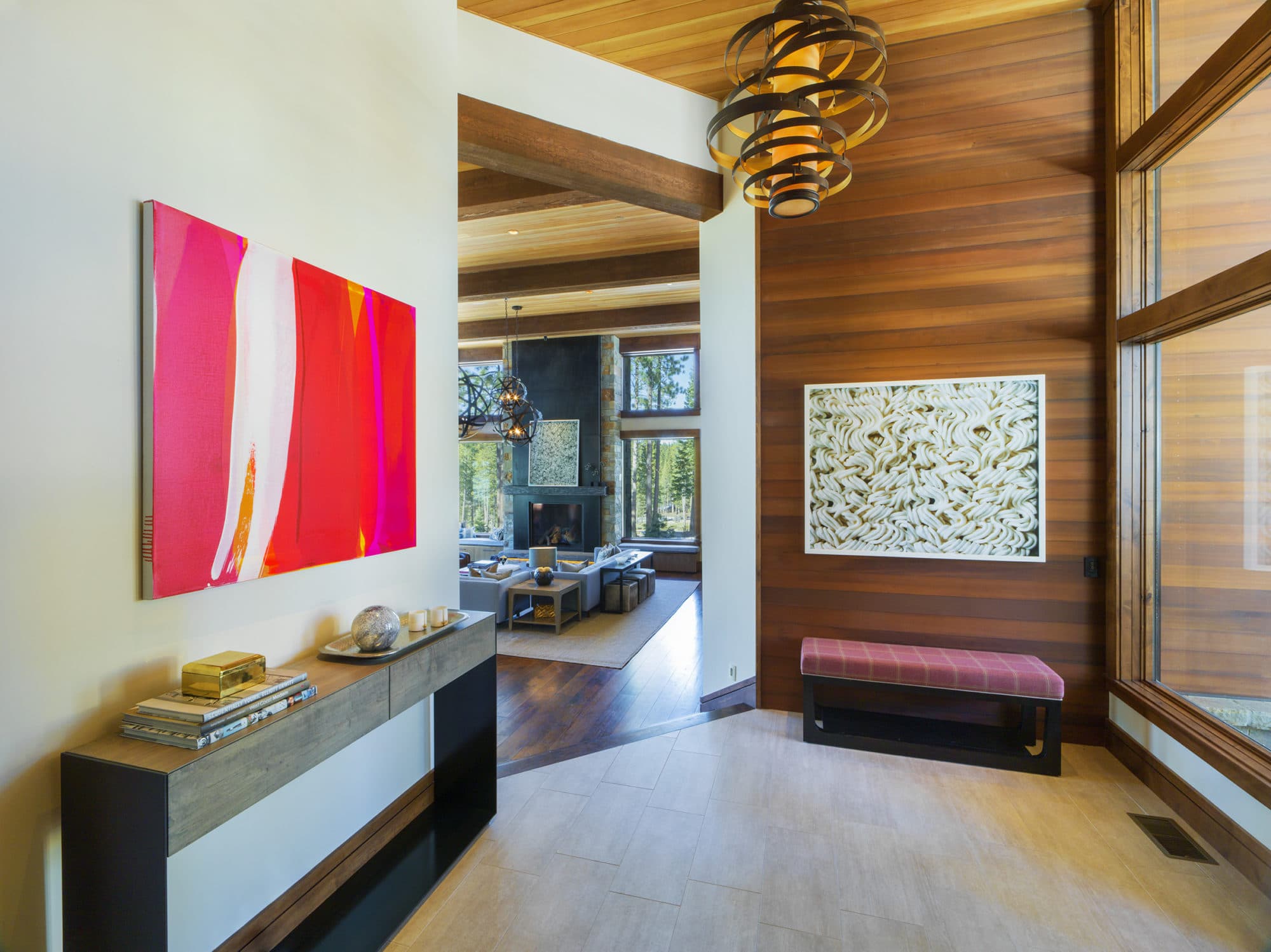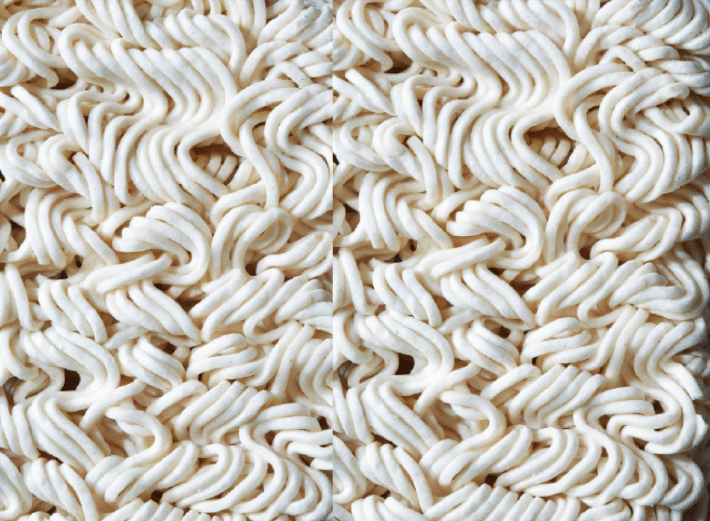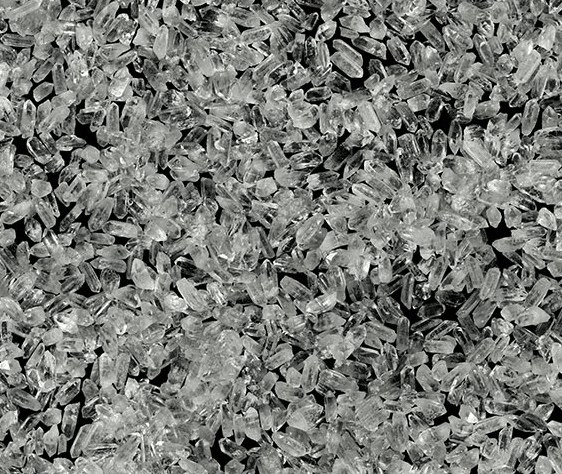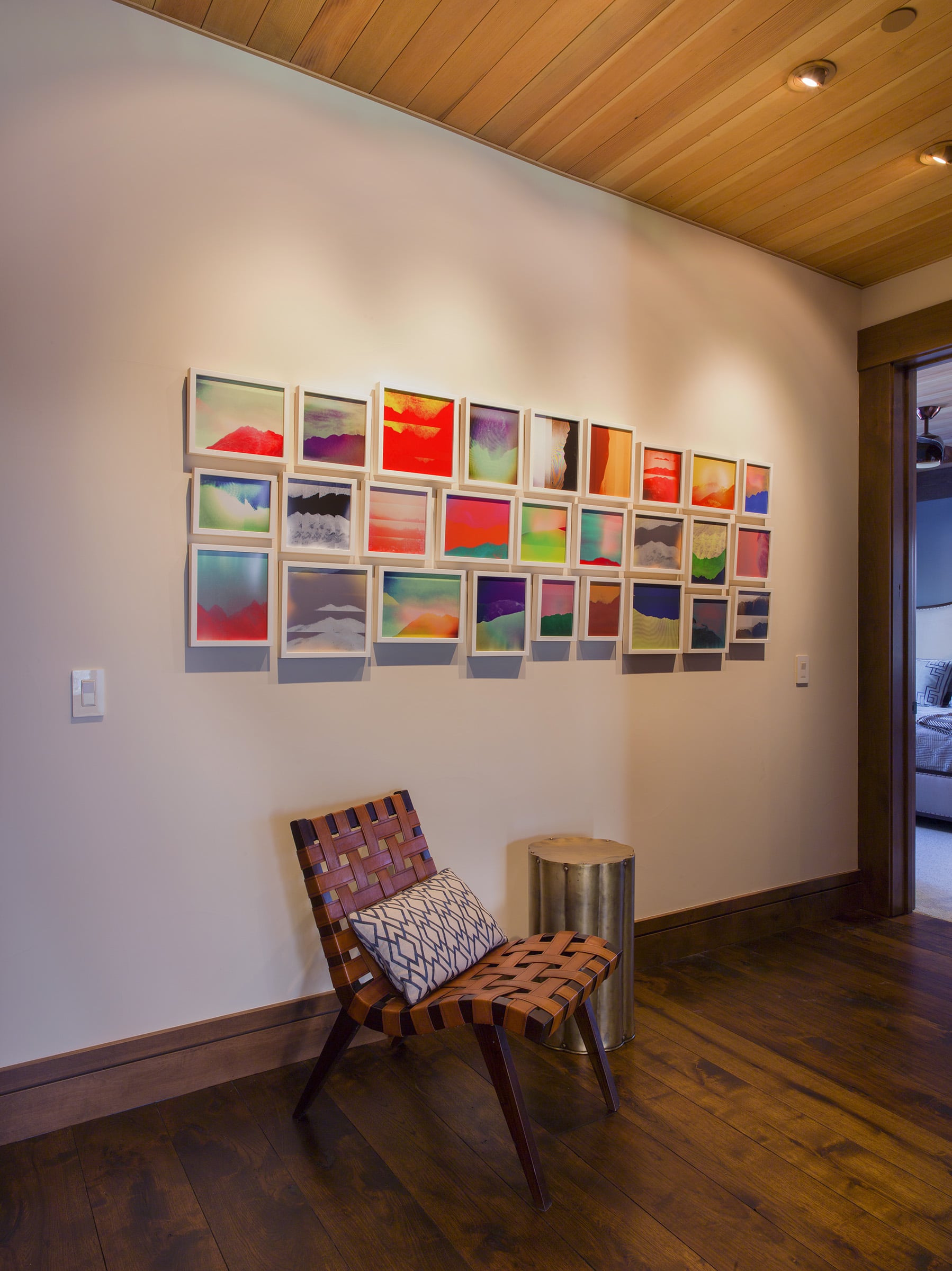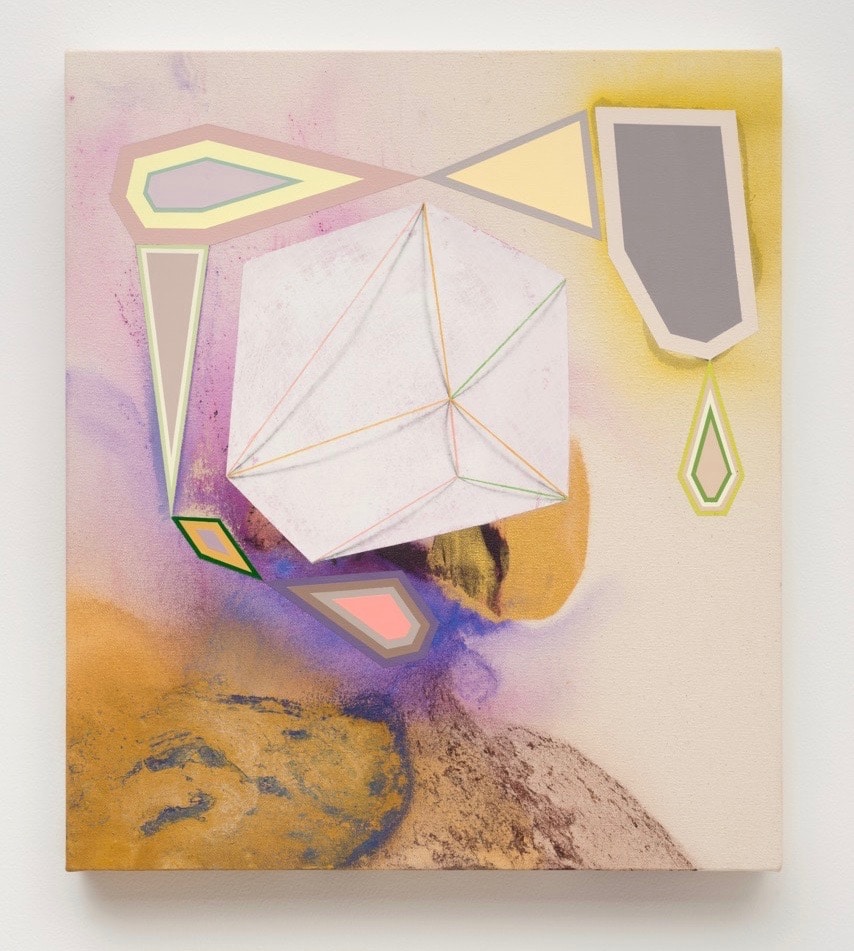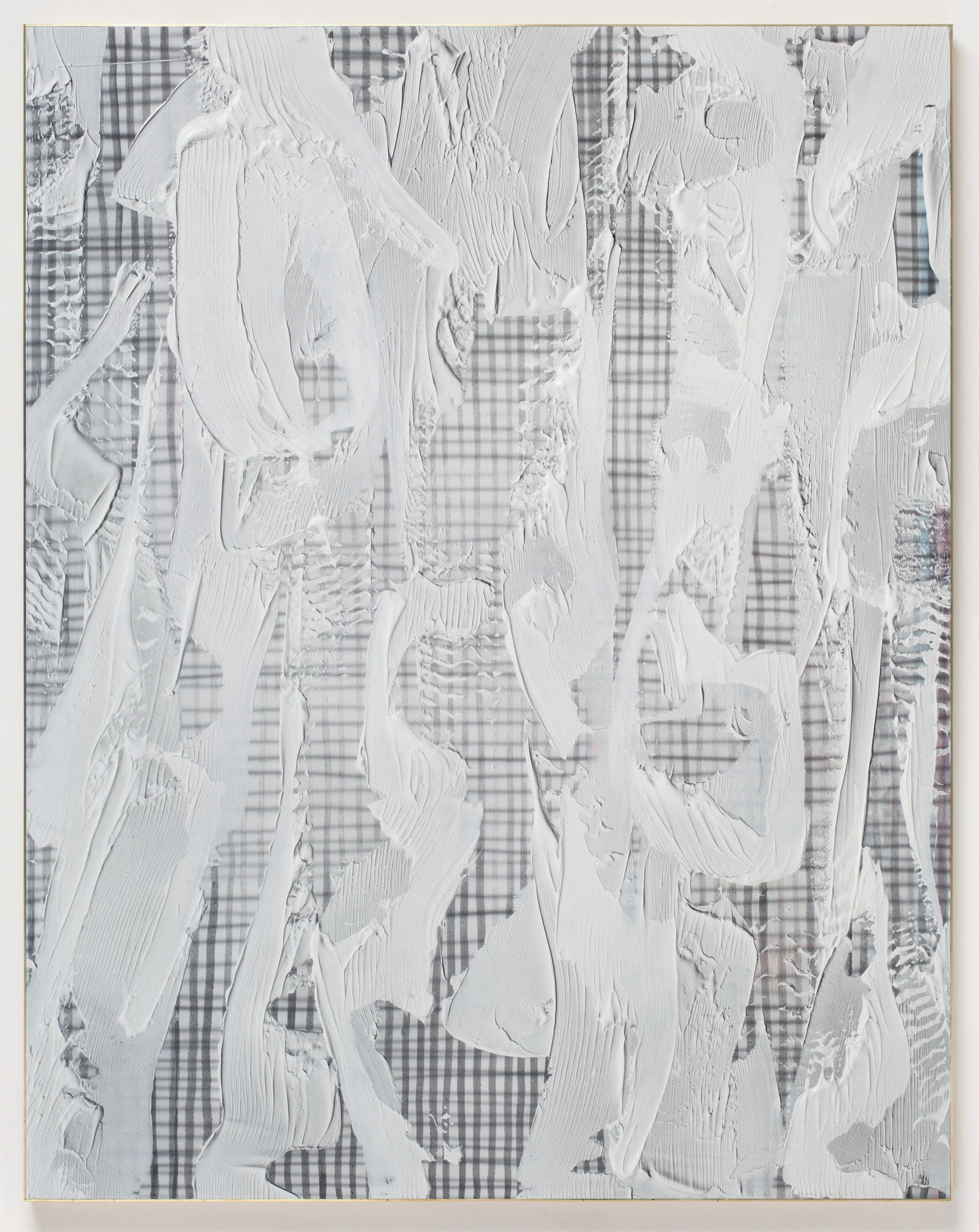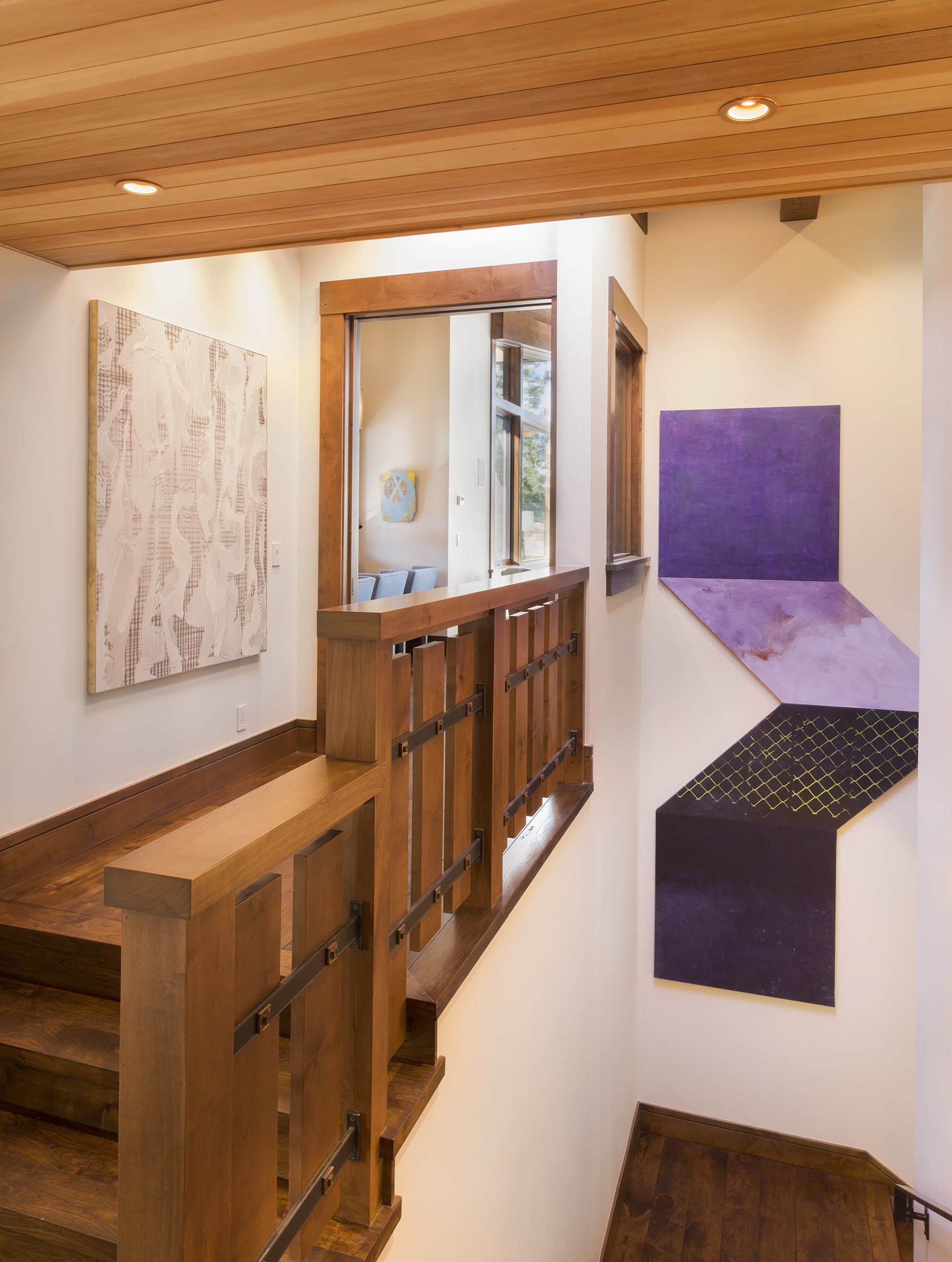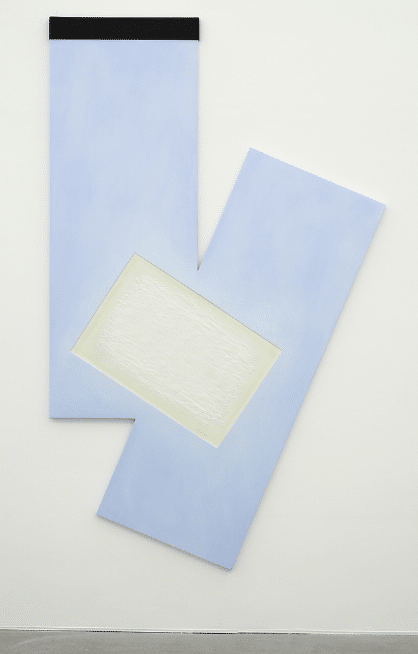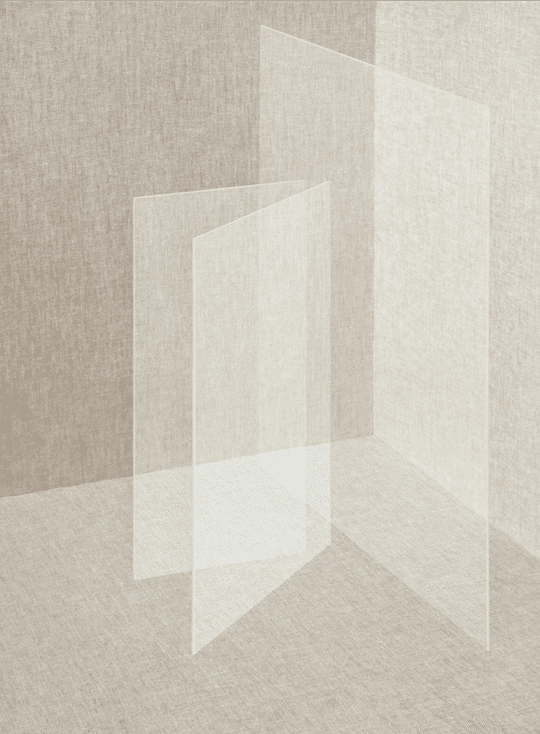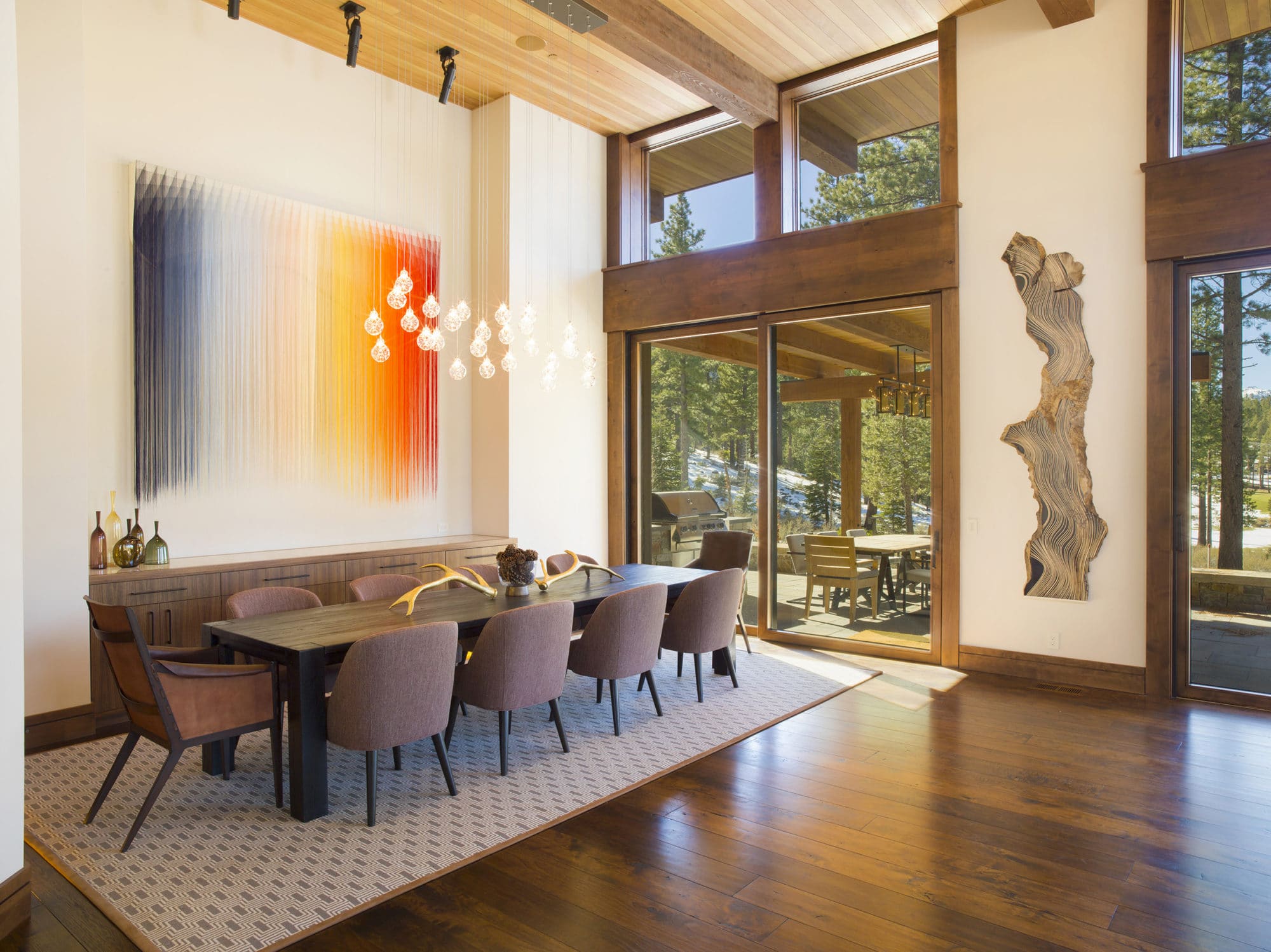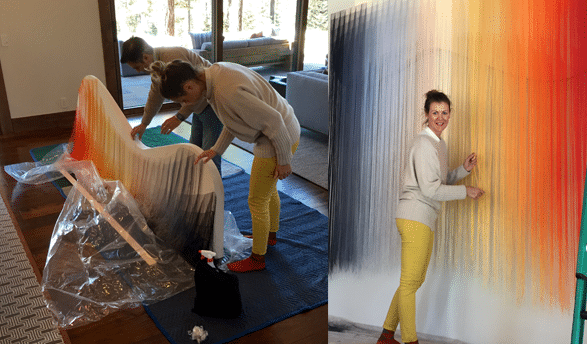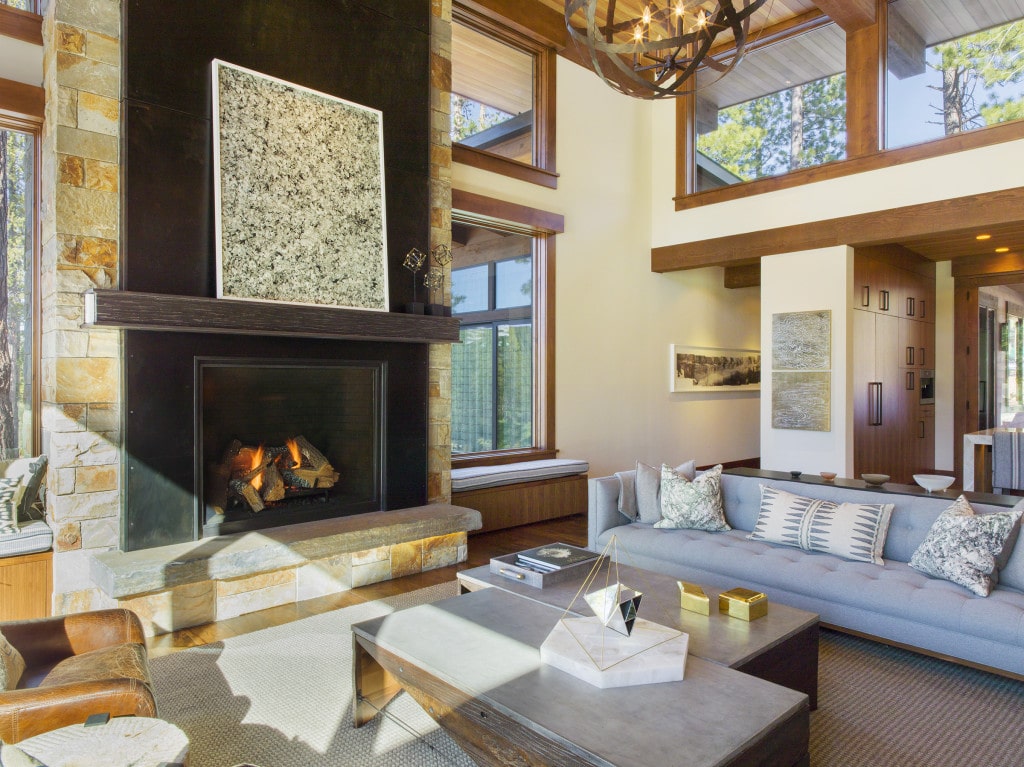Untitled, Art Fair –

Wallen Mapondera, “Deliberate Impressions”, 2018, cardboard, wax paper, waxed cotton thread and ink on canvas at Tyburn Gallery, London.
Zimbabwean artist, Wallen Mapondera creates complex wall sculptures with richly tessellated abstract surfaces out of cardboard and textiles. These works challenge the linearity of time and history, transforming ordinary materials into textured visual puzzles.
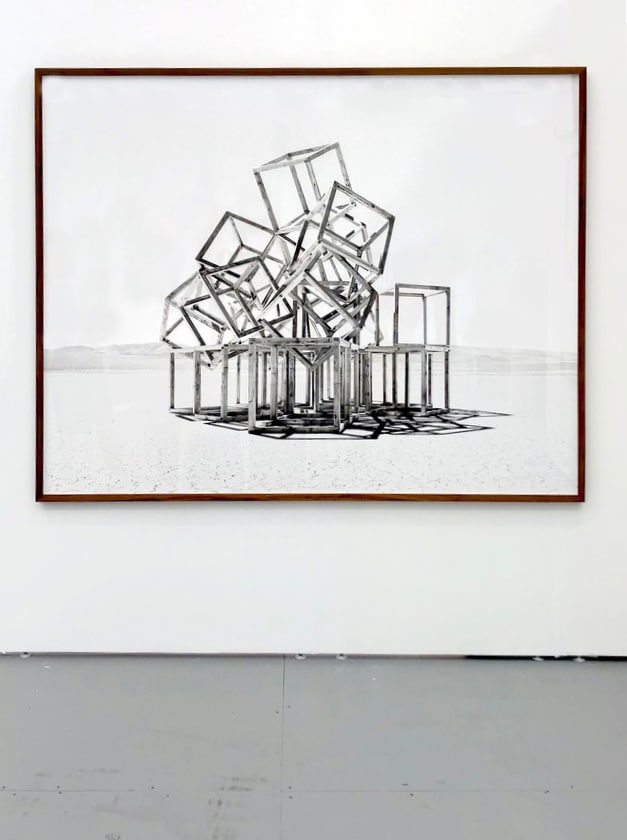
Noémie Goudal, “Telluris VIII”, 2017, C-print mounted on aluminum, 45″ x 57″. at Galerie Les Filles du Calvaire.
Noémie Goudal’s practice is an investigation into photographs and films as dialectical images. Close proximities of truth and fiction, real and imagined offer new perspectives into the photographic canvas. The artist questions the potential of the image as a whole, reconstructing its layers and possibilities of extension through sculptural installations she then photographs.
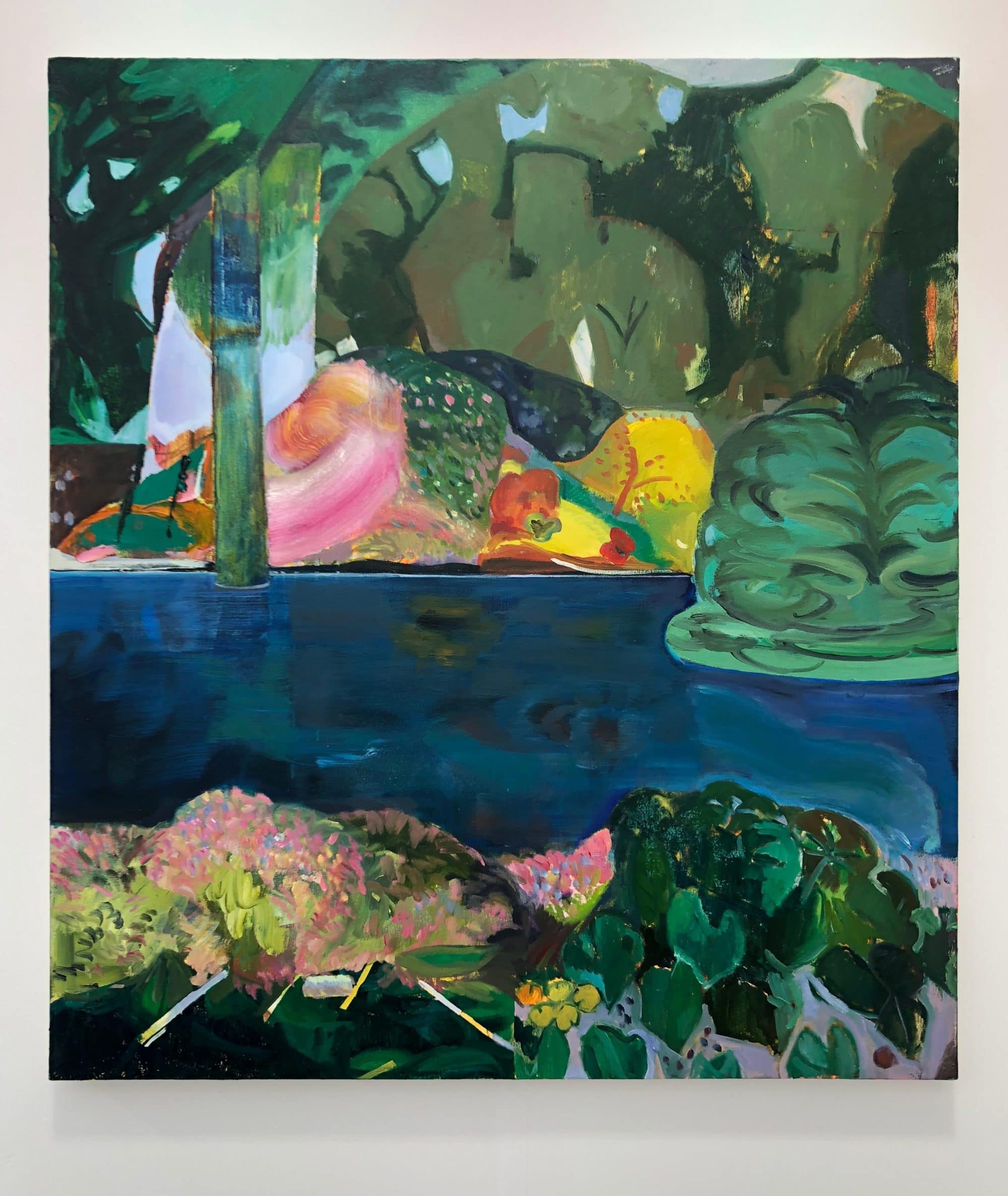
Monica Tap “Charles’ Tree”, 2018, oil on canvas, 46″ x 41″ at MKG127, Toronto.
Monica Tap uses landscape to consider questions of time and history, technology and memory. Her paintings are arrangements assembled from various fragments: outtakes from favorite paintings in history, elements from her own snapshots, color notes, and memory. Each painting is both an invention and a response to place that she knows and has recorded. She is interested in how location or landscape can trigger memory; akin to how painting readily conjures its own past.
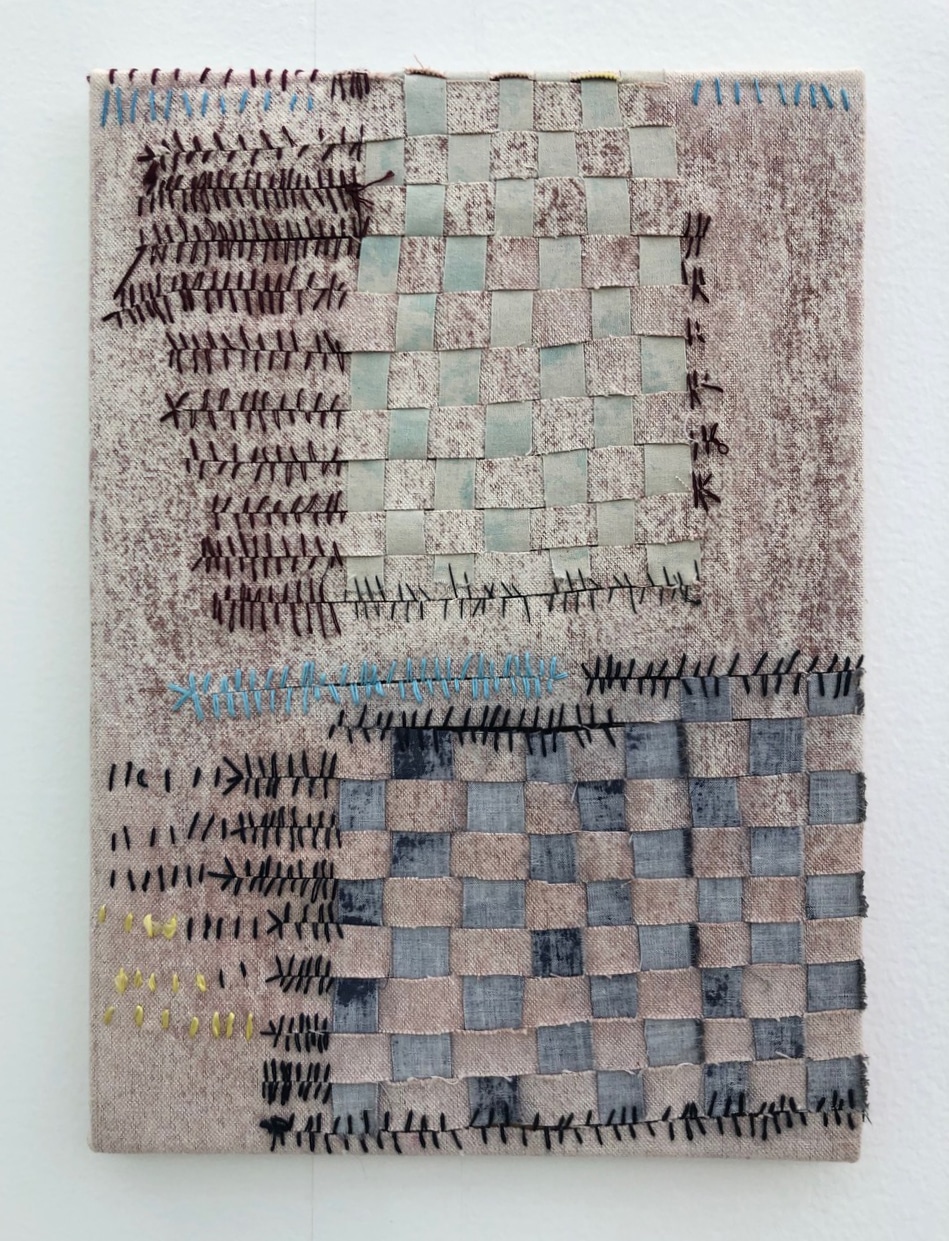
Teresa Lanceta, “Años Despues”, 1997, sewn and woven linen at Galeria Espacio Minimo, Madrid.
These small pieces by weaver Teresa Lanceta are much more informal than her larger works, showing her hand in stitching embellishments. Her approach to weaving focuses on the formal elements, on the original, inherent aspects of woven fabric: its ligaments, materials, traditions and techniques. For Lanceta, weaving is just another part of daily life that allows personal stories, events and experiences to impregnate the warp and weft of their creations.

David Lloyd, “Untitled” (3), 2018, mixed media on paper at Klowden Mann, Los Angeles.
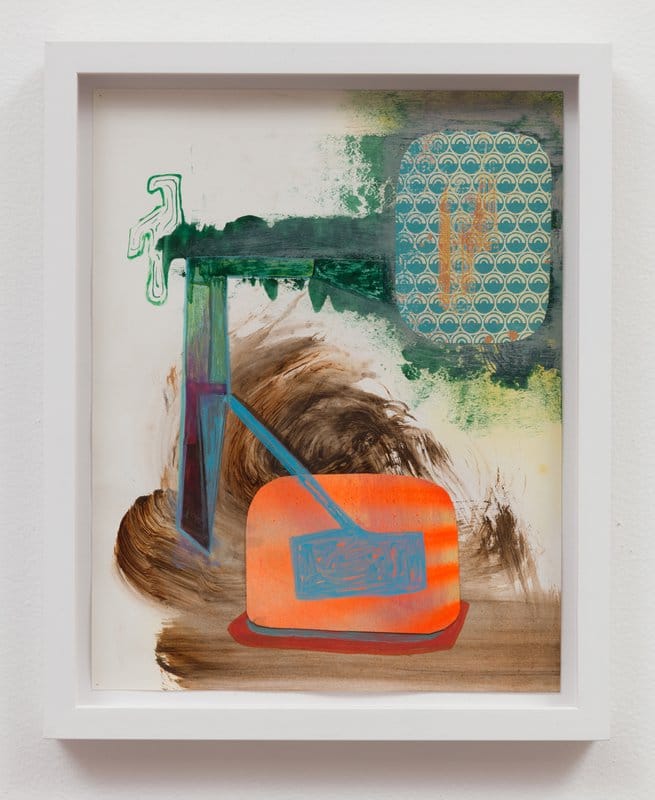
Detail.
These small paintings on paper by David Lloyd incorporate a wide range of media in pursuit of his conceptual goals. He employs a variety of methods ranging from collage, fiberglass and resin, monoprint, paint of a variety of kind and xerox transfer.
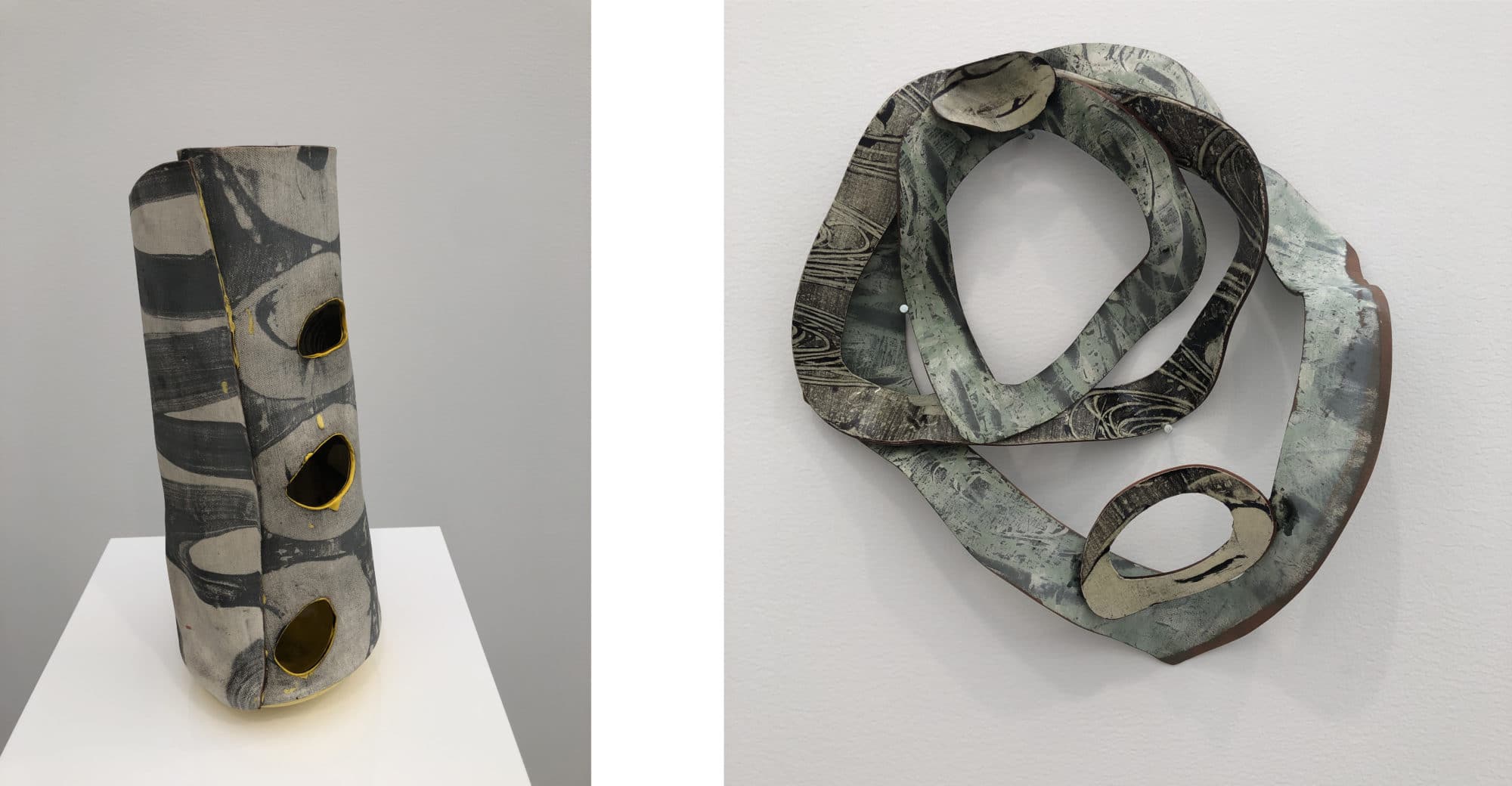
Ranti Bam, terracotta vessel and wall sculptures at 50 Golborne, London.
London based artist, Ranti Bam’s work explores the potential of ceramic to express a love of words and metaphor. Her process involves working with clay in its natural unreinforced state, using slip to embellish the surface with colors, patterns, texts and textures. With inspiration drawn from wood, metal and fabric, she combines hand building and throwing, continually deconstructing and abstracting her pieces, creating form through collage.
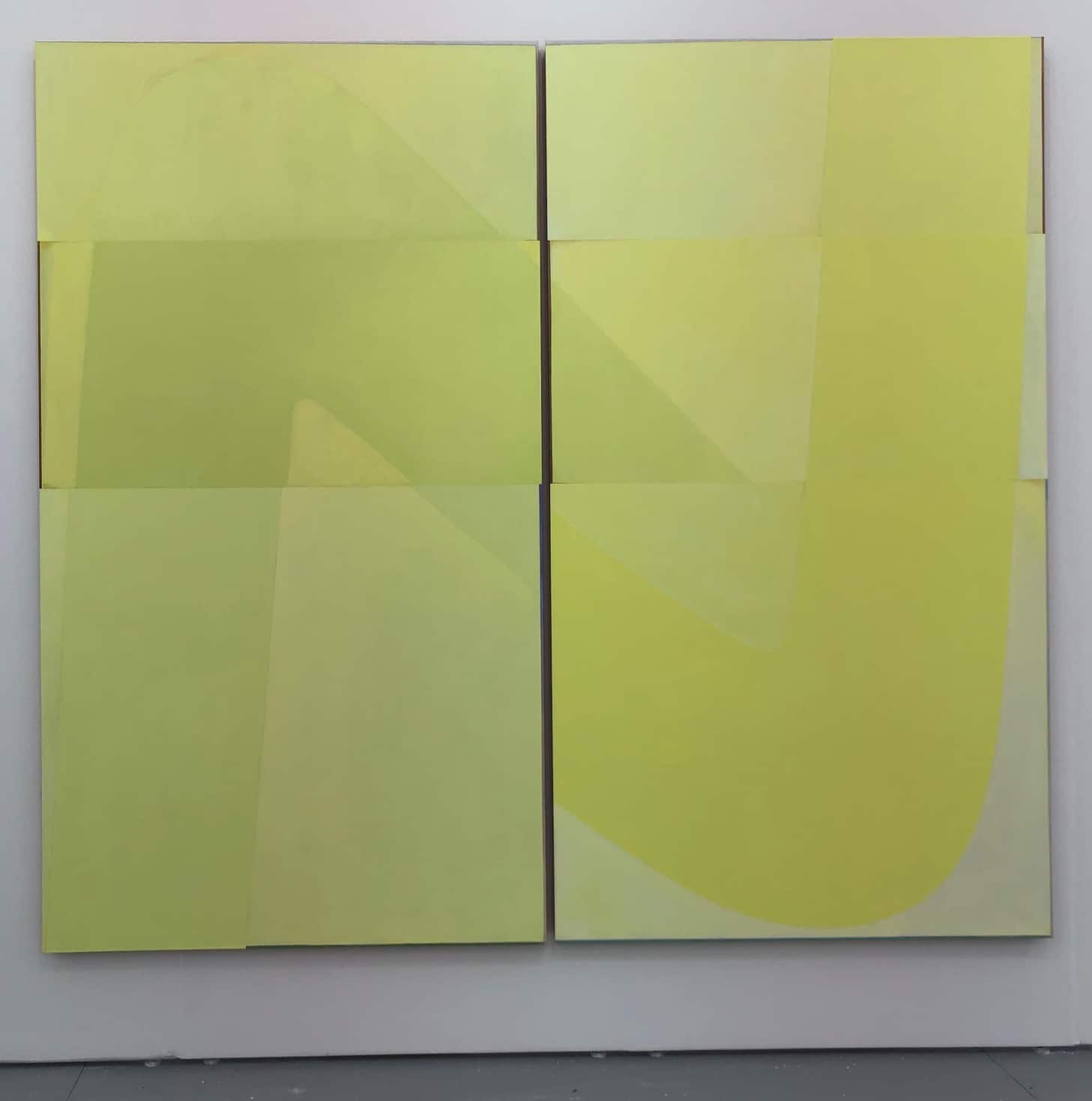
Nathlie Provosty, “Closed Eye Vision (Right)”, 2018, oil on linen diptych, 96″ x 53″ at Nathalie Karg Gallery, New York.
Provosty’s work is engaged with consciousness and perception. The artist uses subtle, highly material qualities of oil paint which oscillate visually and conceptually by way of multi-referential imagery, a physical interaction with light and the environment, and continuous spacial shifts.
Art Basel Miami Beach –

Martin Boyce, “Untitled”, 2017, painted perforated steel, aluminum, and painted steel chain at The Modern Institute, Glasgow.
Martin Boyce’s sculptures, photographs and installations poetically investigate the intersections between art, architecture, design, and nature. He incorporates a palette of shapes and forms that frequently recall familiar structures from the built environment, for example a painted steel chain, yet presents them in a way that is entirely new.

Ida Tursic and Wilfried Mille, “The Comete”, 2018, oil on canvas, 78″ x 118″ at Alfonso Artiaco, Napoli.
Since they began collaborating as a duo in 2000, Ida Tursic and Wilfried Mille have been interrogating the contemporary overload of images and their relation with pictorial representation, questioning their reproduction, circulation and disappearance. Taken out of movies, magazines, media and the enormous repertory of data available on the internet, this boundless source of anonymous, preexisting material is used up and transformed into paintings.
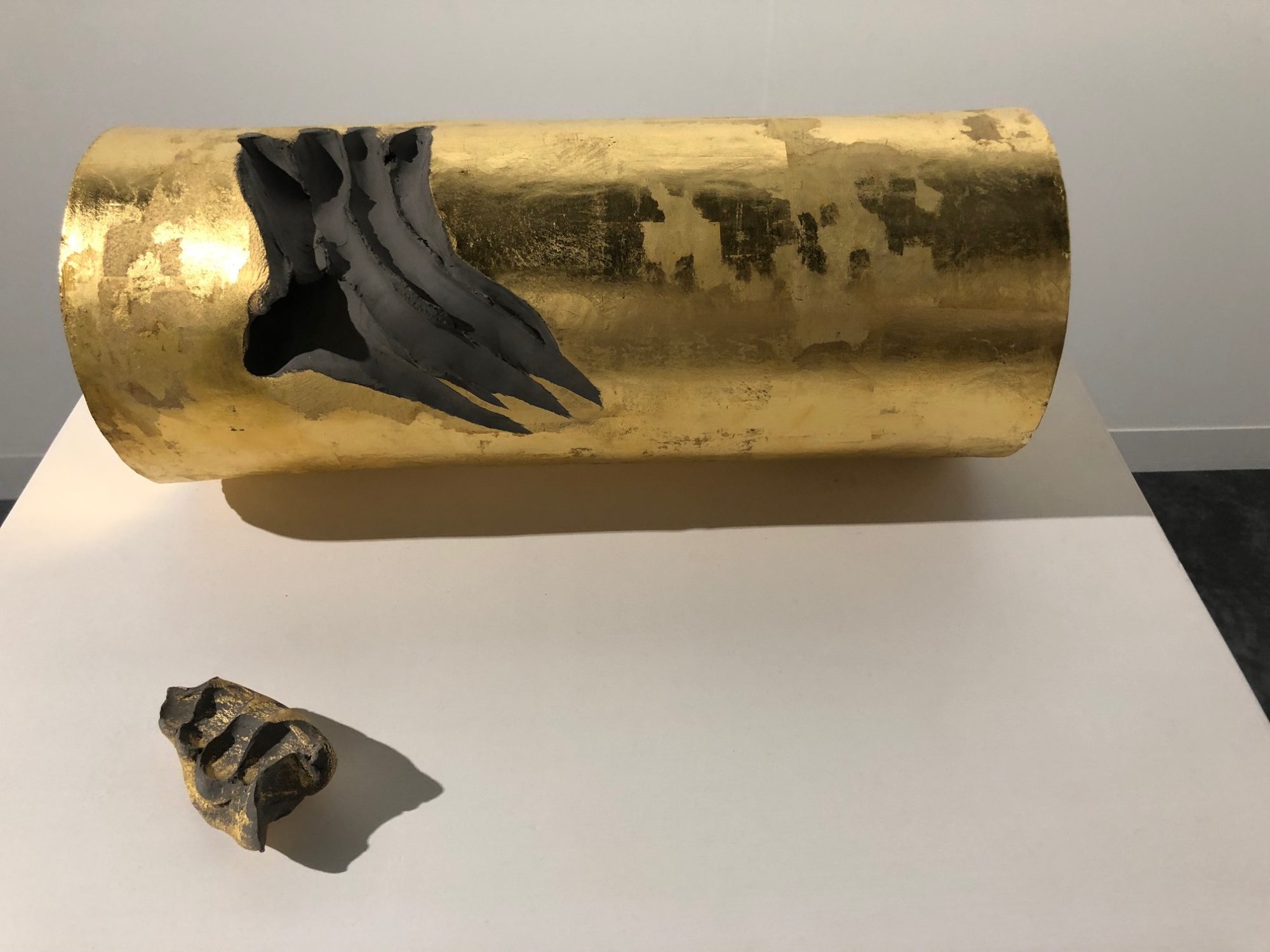
Michel Francois, “A L’arraché”, 2018, clay and gold leaf at Alfonso Artiaco, Napoli.
Always a favorite, Michel Francois work’s accumulate over time and vary according to their disposition in space, or the context. In a manner similar to that of the Arte Povera artists, François uses great economy of means to transform seemingly uncomplicated objects and materials, or traces of past events, into deeply resonant carriers of meaning.
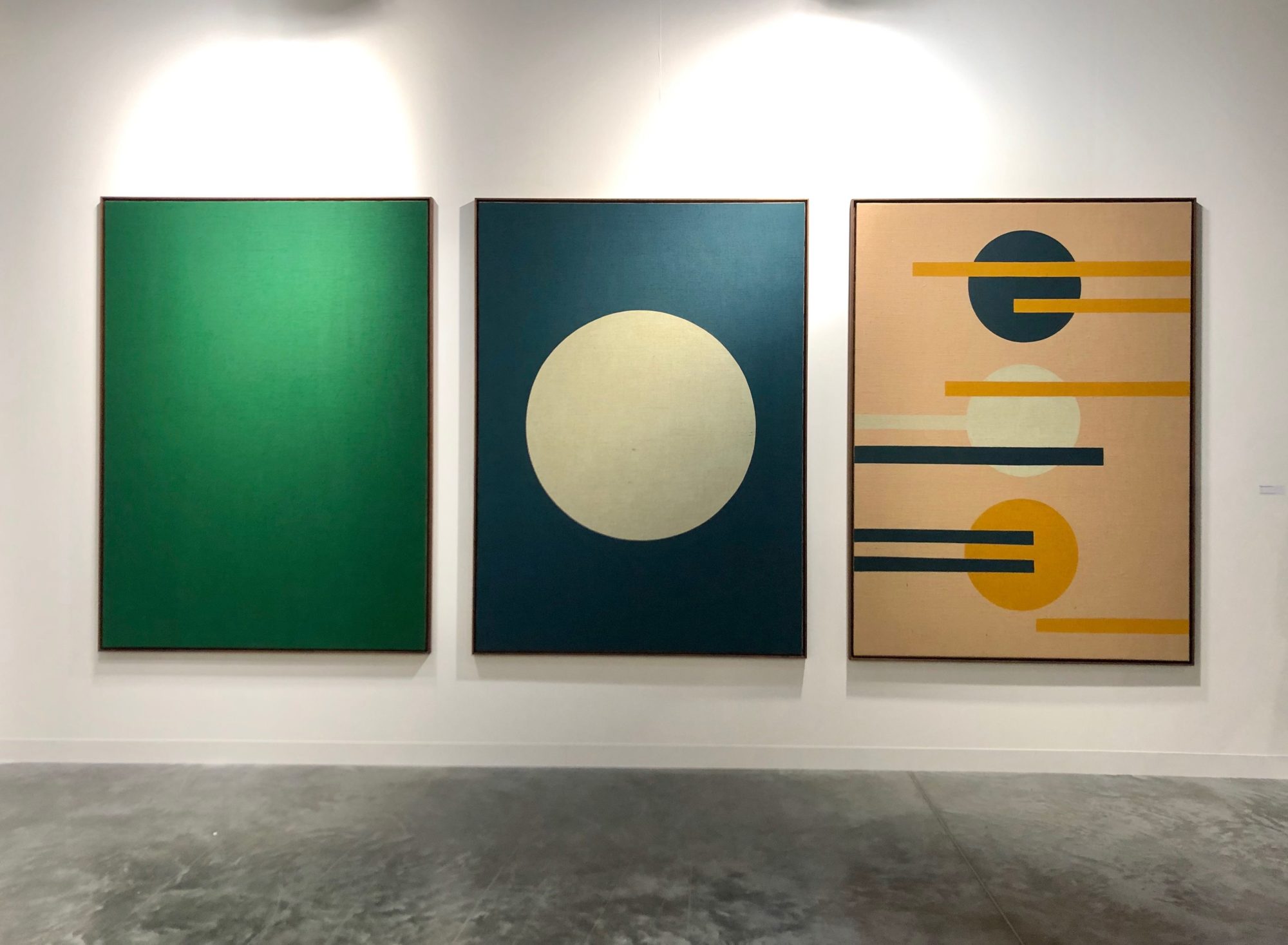
Antonio Ballester Moreno, series of acrylic on linen paintings, 2018 at Maisterravalbuena, Madrid.
Antonio Ballester Moreno creates process-oriented works that materialize through the repetitive gesture of handcrafted geometries in symbolic earth tones. His aesthetic refers to shapes originating in nature, conveyed in a basic metaphoric language: yellow for light; blue to represent water; and the mixing of the two creates green, the color of vegetation; circles are cycles of the moon and sun; triangles are trees and mountains. Through his application of simplistic yet determined shapes and colors, Ballester Moreno has developed a personal vocabulary upon which he builds a world of subtle variances and symbolic compositions. While his approach is rooted in abstraction, his work evokes histories of pattern and decoration, craft, tapestry, design, and African, Islamic and Ottoman influences.
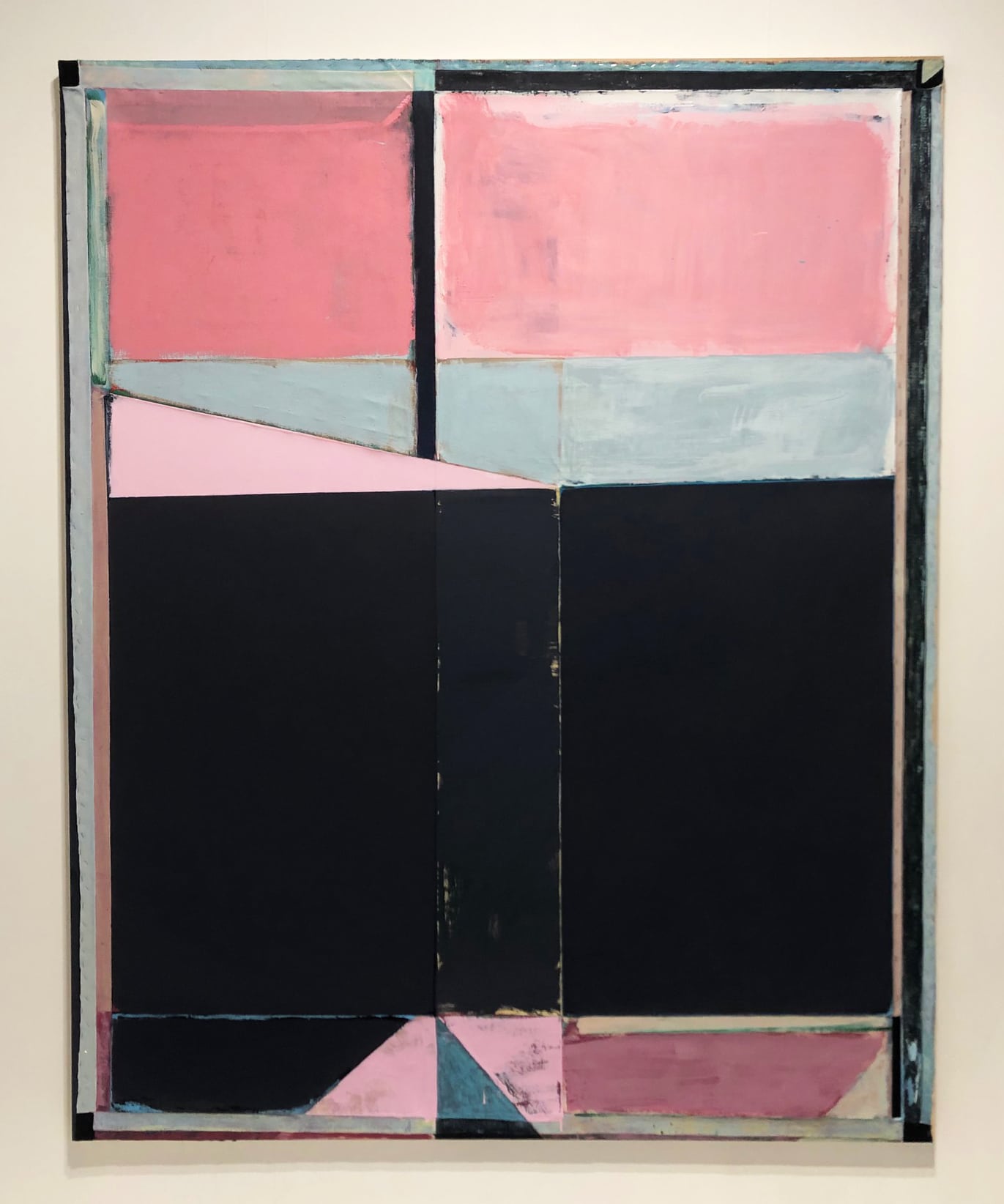
Julia Rommel, “Ex-Wife”, 2018, oil on linen, 90″ x 72″ x 2″ at STANDARD, Oslo.
American artist, Julia Rommel uses canvases and stretchers as sculptural architecture for her work. She physically manipulates her canvases until arriving at a suitable intersection of composition and color fit for a convincing abstract painting. Rommel repetitively cycles through painting, stretching, painting, un-stretching at shifting scales and awkward angles. The results are color-blocked, stretched and re-stretched canvases where the physical process of the artist’s hand is documented through layering.

Kyungah Ham, “Abstract Weave/ Morris Louis Dalet Tzadik 1958″, 2014, machine embroidery on cotton, collected internet world news, tassel, wooden frame, 64.17″ x 65.75” at Kukje Gallery, Seoul.
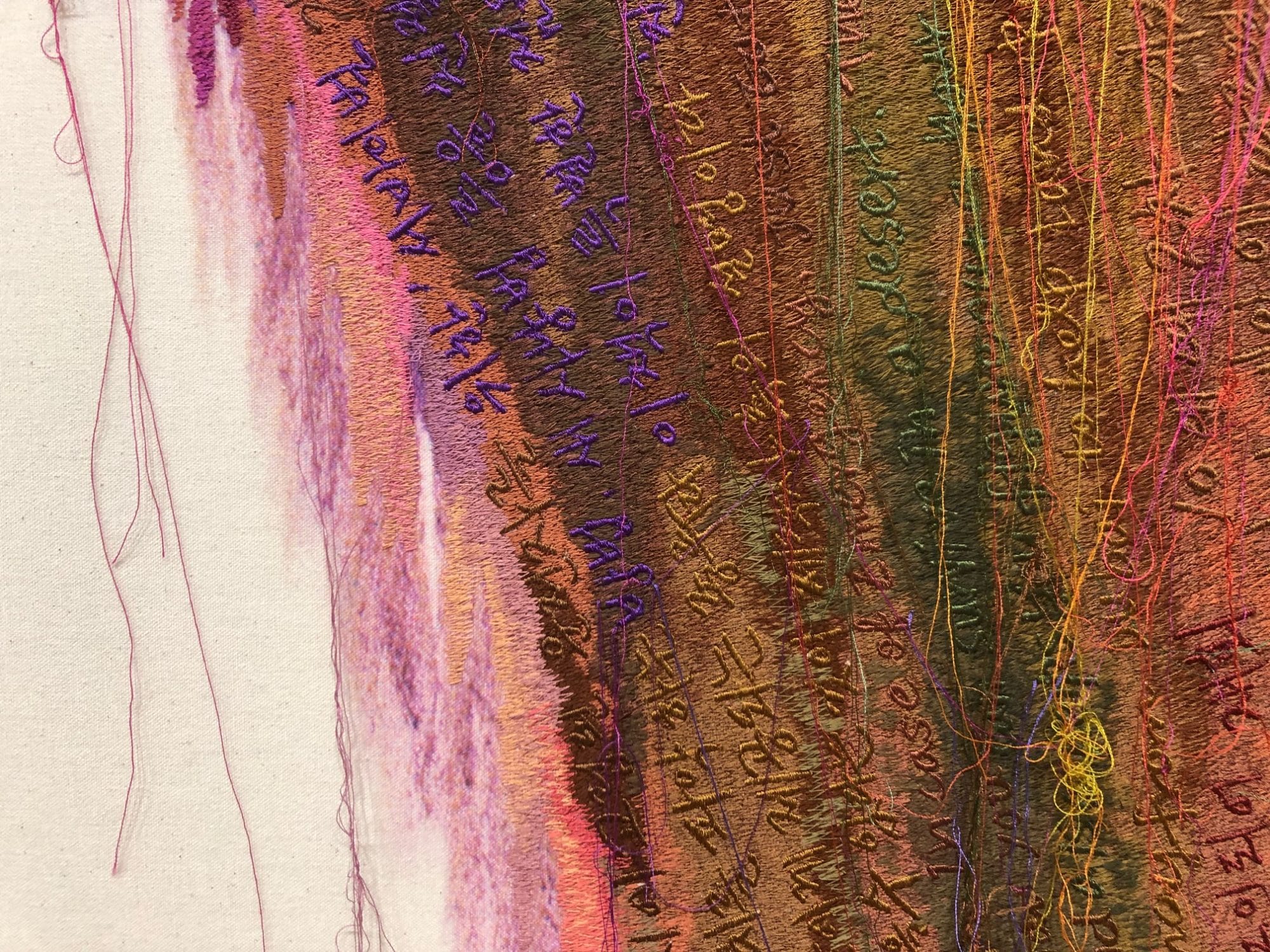
Detail.
Ham is well known in Korea and internationally as an artist whose diverse practice investigates the political issues facing contemporary Korean society. She bravely confronts both memory and history and engages the subjects of nationhood and identity, framing larger questions of social value and progress with poetic works full of color and beauty. The work recalls a kind of postmodern narrative painting, mixing decorative and psychedelic imagery with lyrics from familiar songs and metaphoric language. Using appropriated images and texts, Ham re-contextualizes their histories to establish alternative interpretations of the value hierarchies that govern everyday life. The work blurs the personal and political.
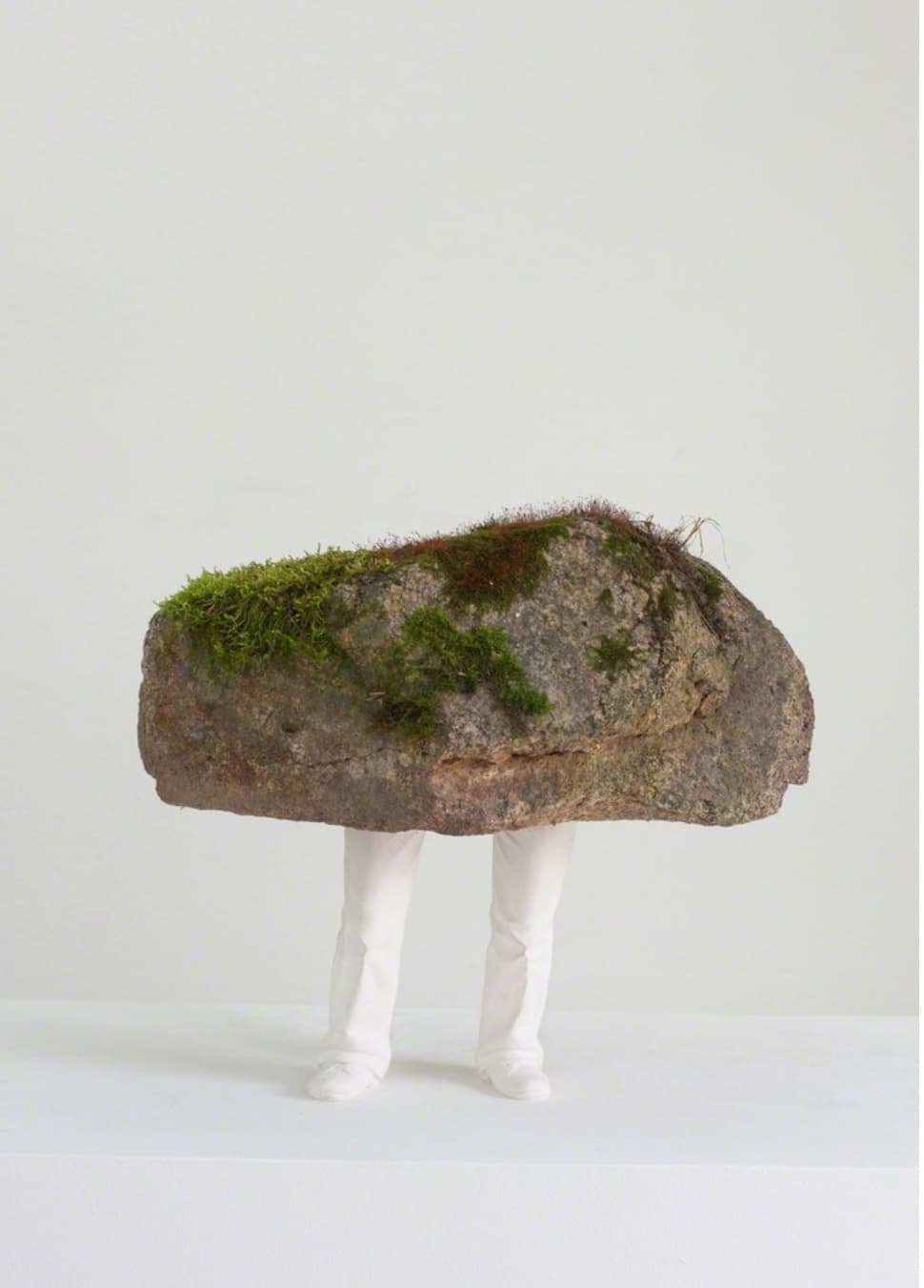
Erwin Wurm, “Stone”, 2018, acrystal and stone sculpture at Lehmann Maupin, New York.
Austrian artist, Erwin Wurm explores the idea of the human body as sculpture. While Wurm considers humor an important tool in his work, there is always an underlying social critique of contemporary culture. Wurm emphasizes this dichotomy by working within the liminal space between high and low and merging genres to explore what he views as a farcical and invented reality.

Brian Maguire, “Grow House”, 2014, acrylic on lines, 78 3/4″ x 55 1.8″ at Fergus McCaffrey, New York.
Irish painter Brian Maguire, who now works in Juárez, Mexico, creates work in response to the proliferation of deaths that have followed in wake of the Mexican drug war. Maguire’s affinity for social activism stems from his involvement in the civil rights movement of Northern Ireland in the 70s. His large scale paintings—which utilize wide, open brushstrokes and combine rough, dry marks with vertical and horizontal drips—aim to deny any poetic sensibility to the harsh scenes they often depict.
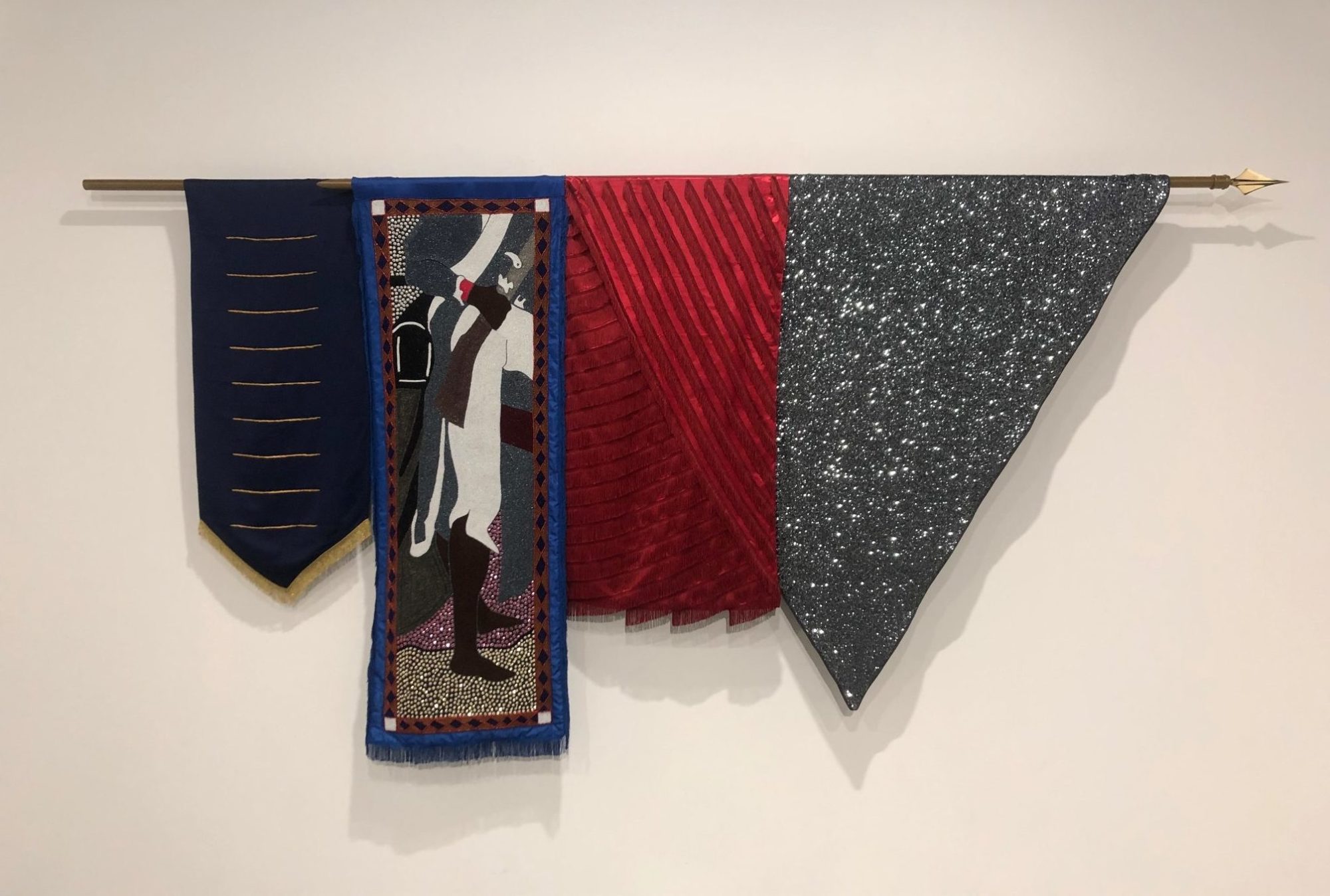
Kapwani Kiwanga, “Nations: Vertières, 1803”, 2018, embroidered fabrics, sequins and pearls, metal bar at Galerie Jérôme Poggi.
From the series, “Nations”, that was conceived for the fair, Kapwani Kiwanga’s work reflects on the links between spiritual belief and politics. Kiwanga develops this reflection around Haitian vodou, and its syncretic nature. Using ancestral beadwork technics perpetuated by Haitian craft women who collaborated to the project, the sculptural installations consist of embroidered and superimposed fabrics, creating hybrid forms in-between paintings, religious banners or national flags.
PULSE –
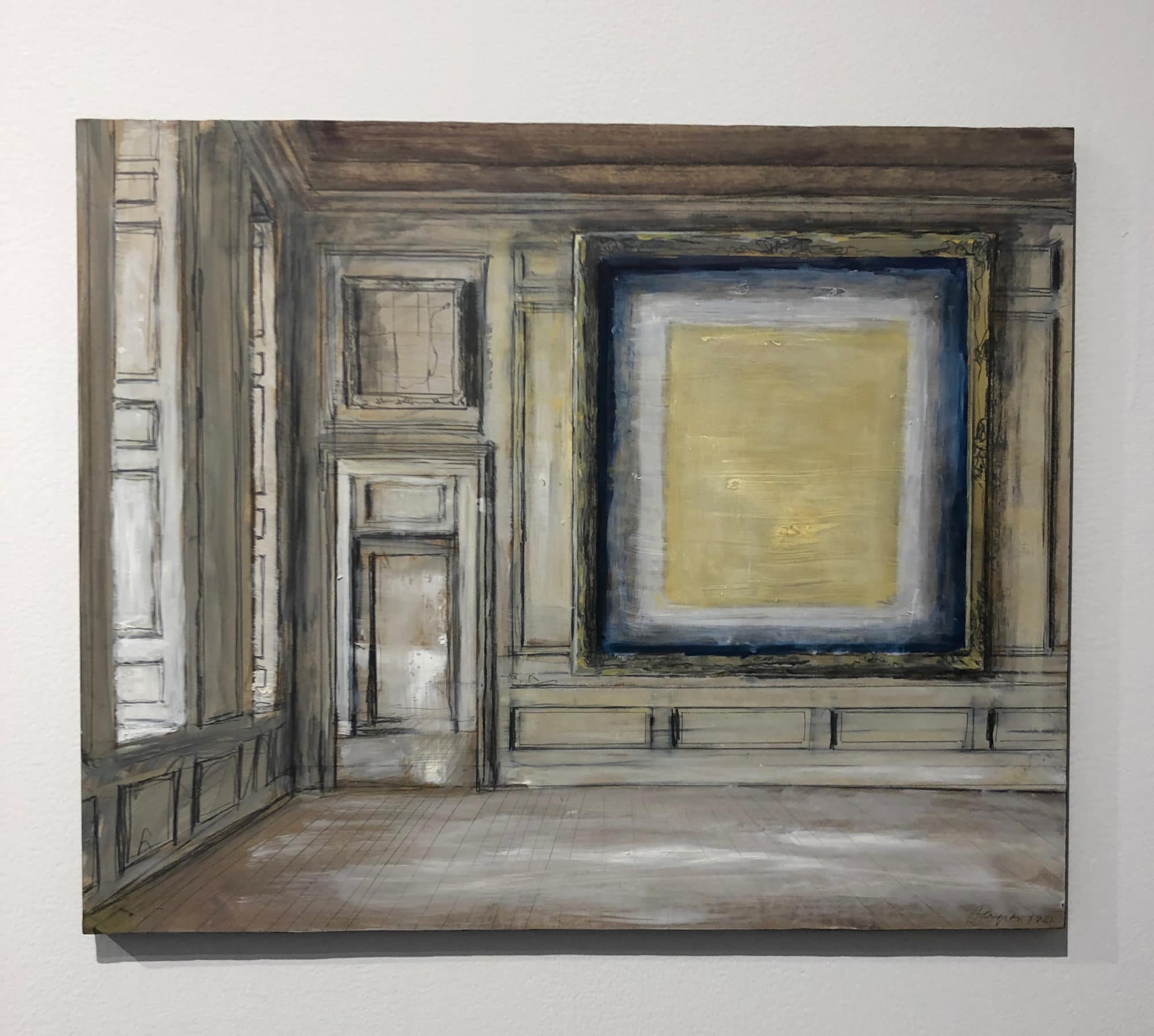
Pierre Bergian “Le Gran Tableau”, 2018, oil on panel, 19″ x 23″ at Purdy Hicks Gallery, London.
Bergian’s paintings are always a favorite. His work looks at rooms and spaces that are often almost empty. He is intrigued by the many old, abandoned houses he encountered as a child in Belgium. His interiors are often filled with art whether they are hung on the walls or piled against and easel on the floor, often depicted as no more than a square shade of color on the wall.
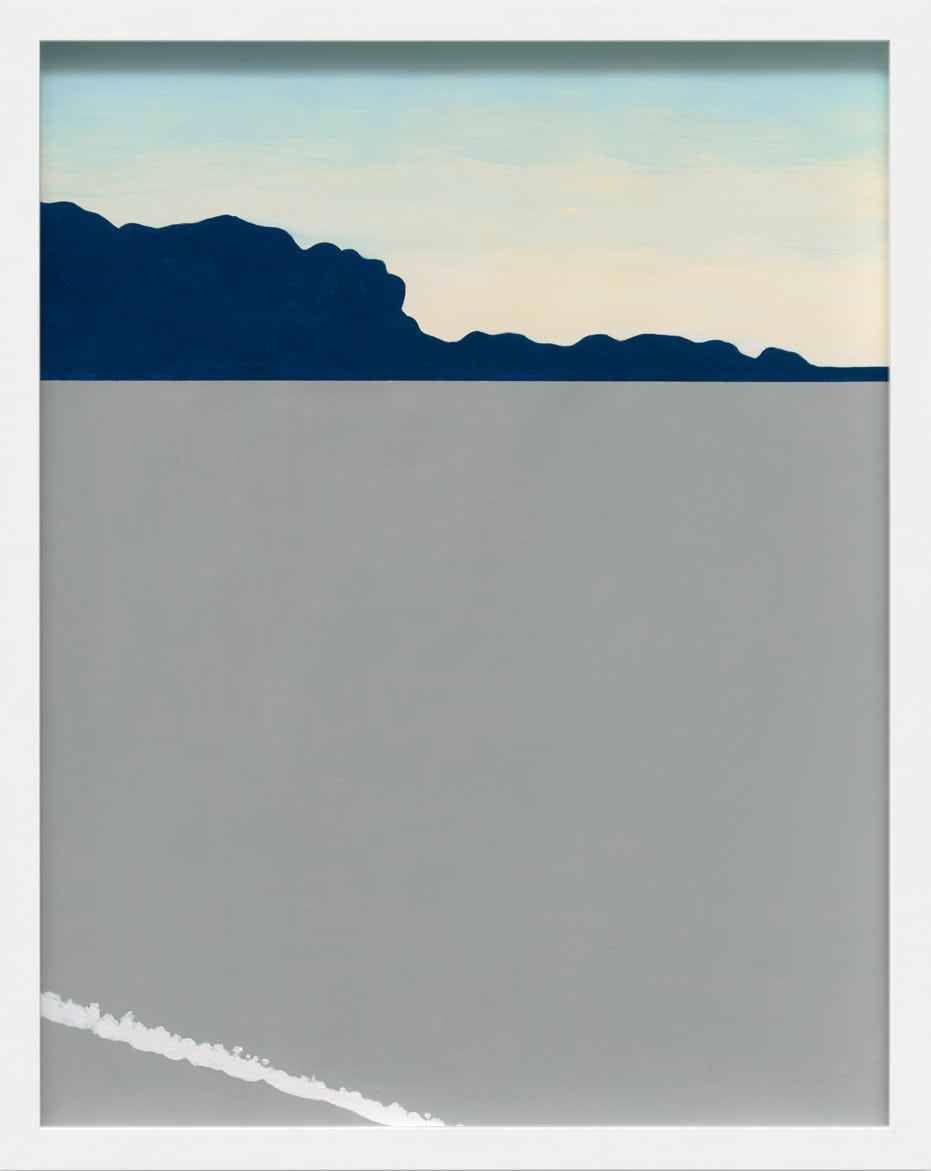
Nobuyuki Takahashi “Untitled VII”, 2018, acrylic on paper at Rena Bransten Gallery, San Francisco.
Japanese artist, Nobuyuki Takahashi is inspired by scenes from his everyday life. Takahashi’s careful observation of place is distilled from an undulating world a quiet sense of equilibrium. Through a multi-iterative process, Takahashi extracts the essence of his surrounding environment which results in a deceptively simple rendering of “light, depth, and reality,” imbued with a sense of serenity and contemplation.
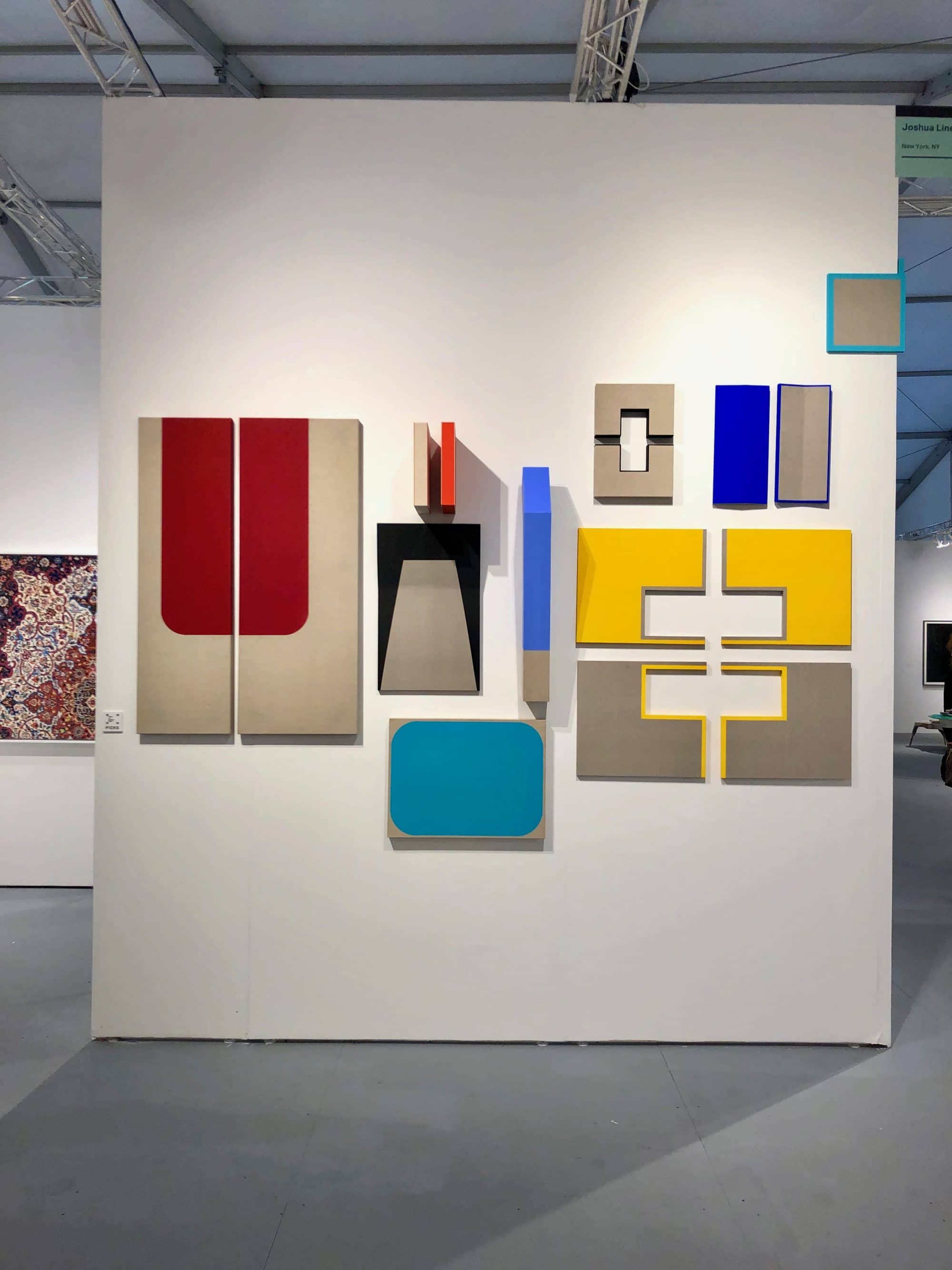
Louise Blyton, installation of acrylic on linen sculptural paintings at Joshua Liner Gallery.
Louise Blyton creates three-dimensional paintings that interact with the architecture of the gallery space. By manipulating the shape of the traditional canvas, the Melbourne-based artist, conceives her own spatial dimension, confusing the standard relationship paintings have to any standard white wall. Some works appear to climb the surface of the walls, while others straddle columns and corners, interrupting the flow of the white cube. To create these works, Blyton stretches raw linen over custom supports and adds coats of dense pristine acrylic paint or layers of pigment. From afar, these constructions appear robust with clean planes of color, however, up-close there is evidence of the artist’s hand in the subtle shifting satin and low gloss finishes.
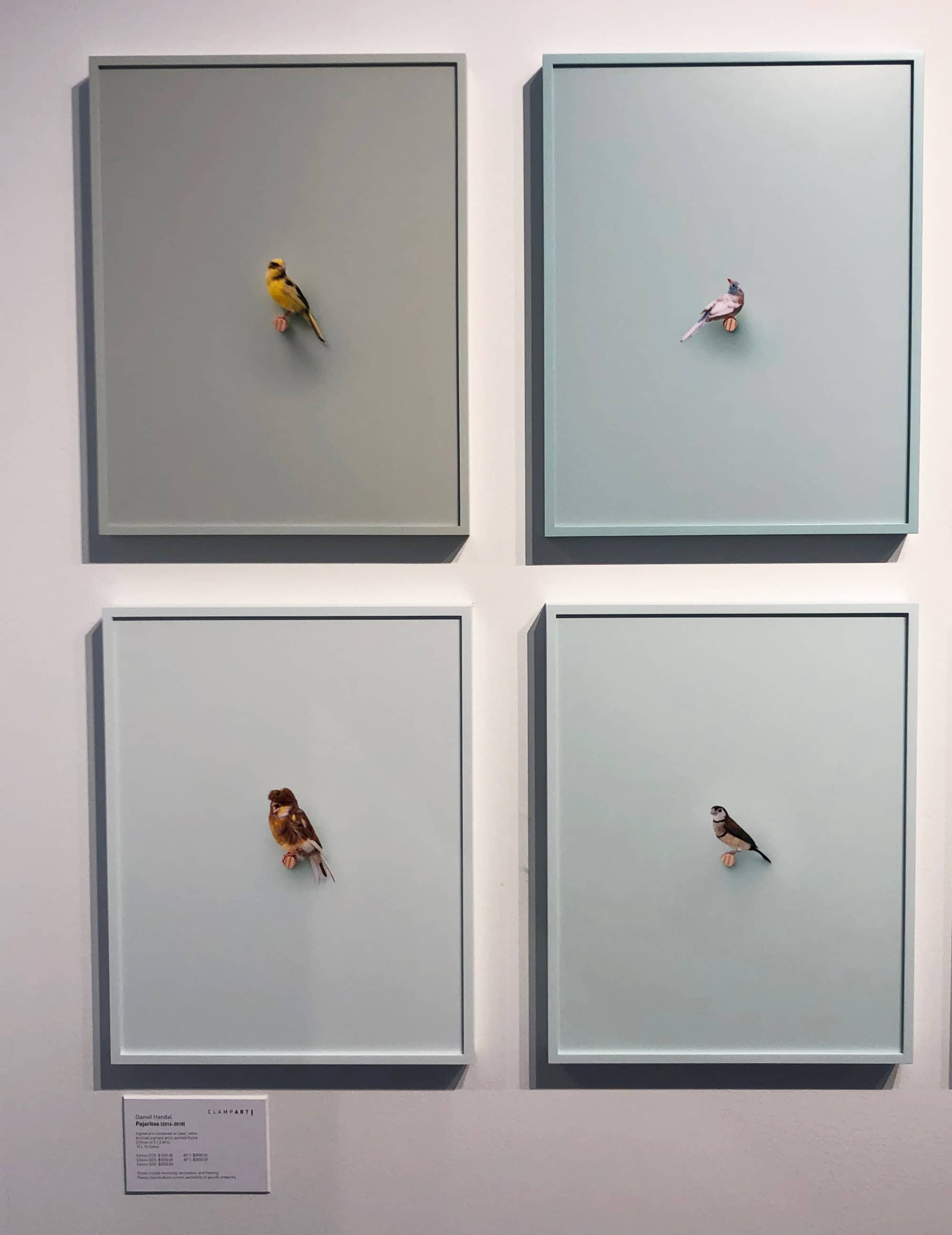
Daniel Handal, “Pajaritos”, archival ink prints with matching painted frames at Clampart, New York.
Daniel Handal presented a chromatic installation of photographs of exotic birds “pajaritos”. He found exotic bird keepers in New York City, traveled to their homes with a portable studio with a variety of pastel-colored backdrops that included a place for a perch. The portraits are then printed at 19″ x 15″ each with the bird represented life-sized to scale.
NADA –
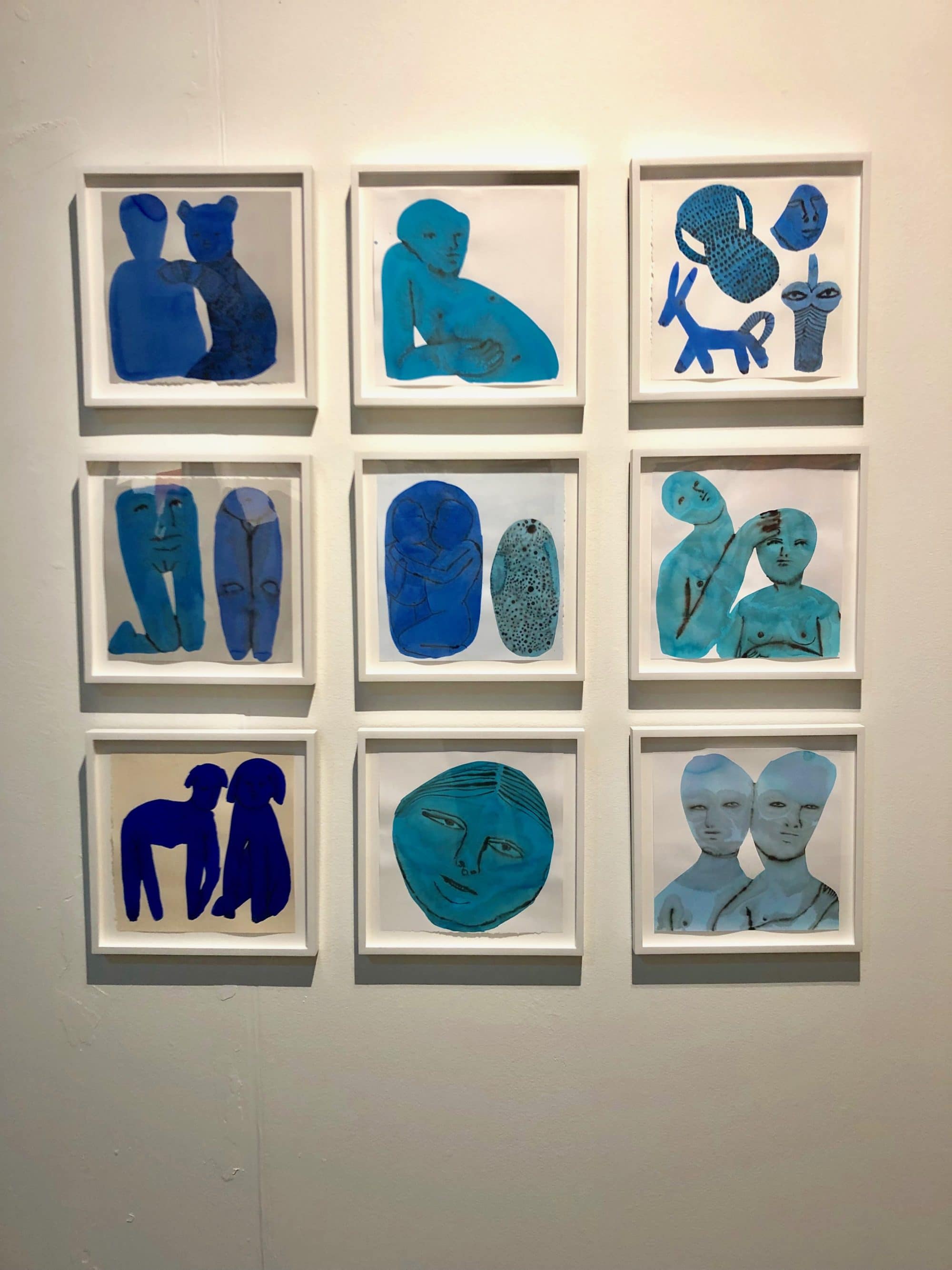
Emma Kohlmann, installation of Blue Interior Series, watercolor and Sumi ink at Jack Hanley Gallery, New York.
This installation is a small selection of Kohlmann’s fluid paintings drawn from ancient statues and figurines or mythological narratives. Grouped by color and arranged in a grid these watercolors evoke a cache of symbols like hieroglyphics.

Emanuel Seitz, Untitled, acrylic paint on canvas 76″ x 51″ at Jacky Strenz, Frankfurt.
These striking large-scale paintings by Emanuel Seitz are made in constant movement by first sketching out a shape, then repeating the shape over and over to fill in the composition. The result presents a strong command over color and geometry.
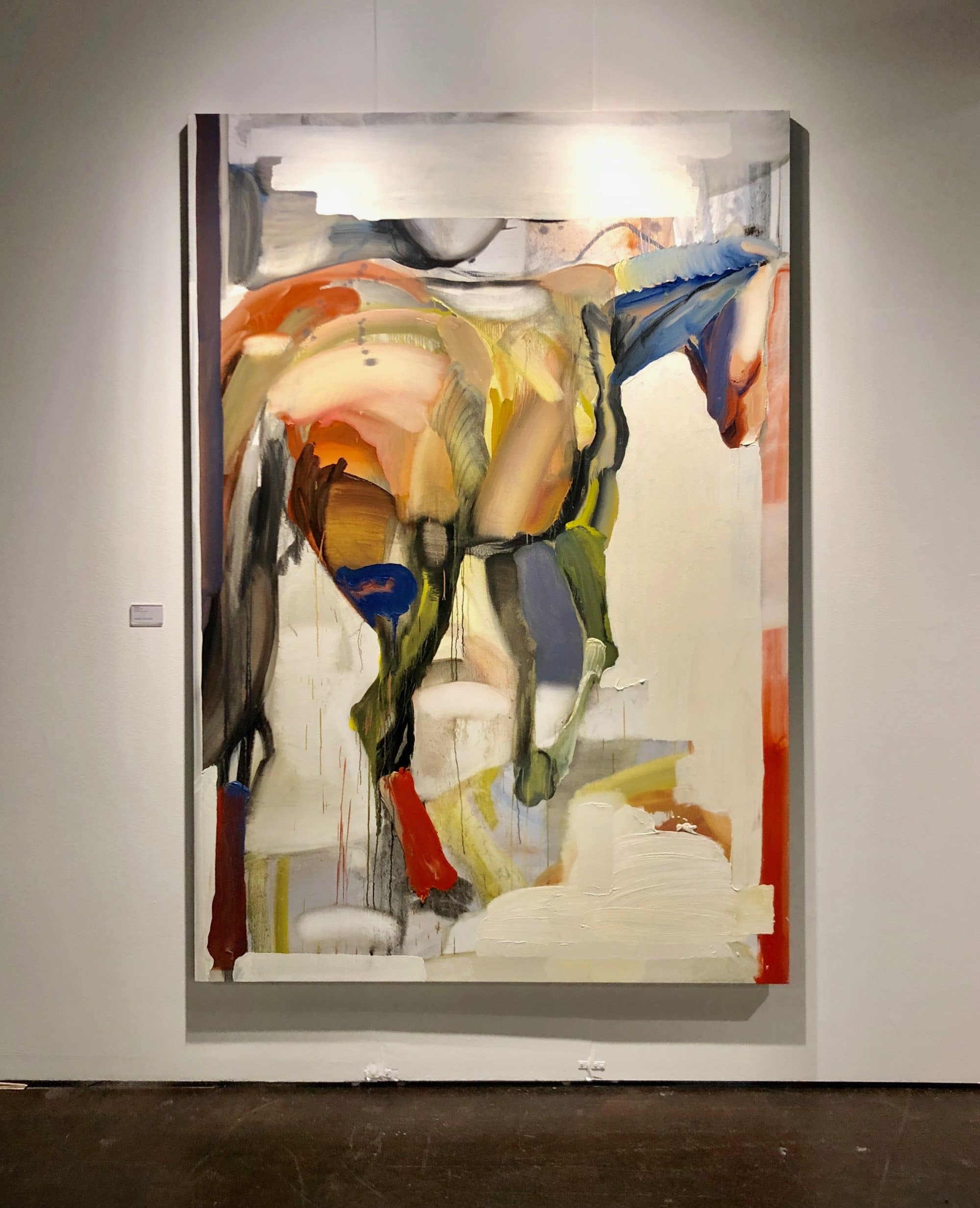
Andy Woll “Sportville II” oil on linen, 96″ x 66″ at Night Gallery.
New work by Andy Woll with the horse as subject matter shows his skill in color composition and painting techniques.
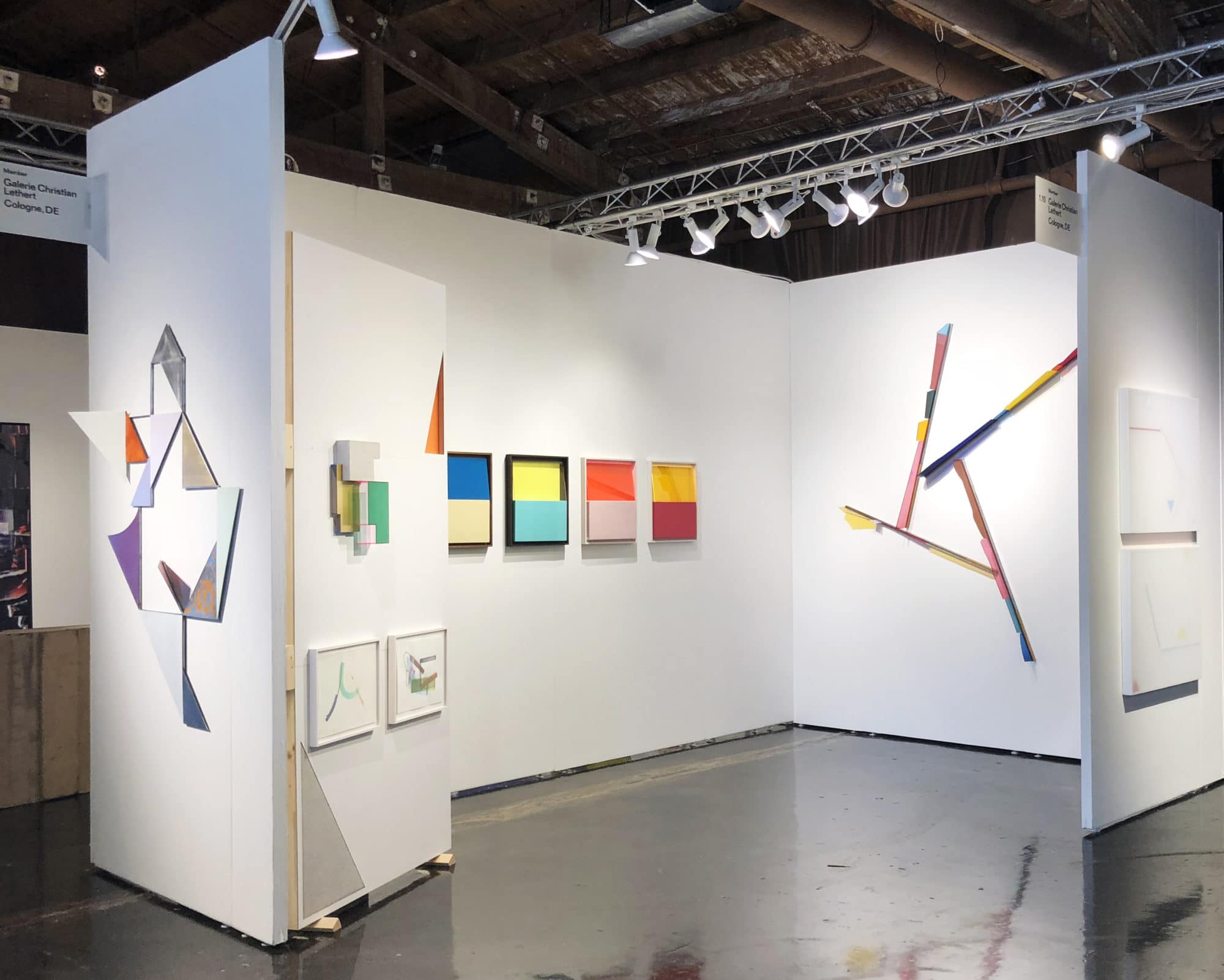
Solo booth by Henrik Eiben at Galerie Christian Lethert, Koln.
This year Galerie Christian Lethert presented a solo booth by artist Henrik Eiben and we loved everything in it. The work included watercolors, wall sculpture made of steel, glass and wood as well as constructed canvases made of plexiglas, fabric and wood. The works together really show his sensitivity to shapes, colors and materials.
Faena Festival –
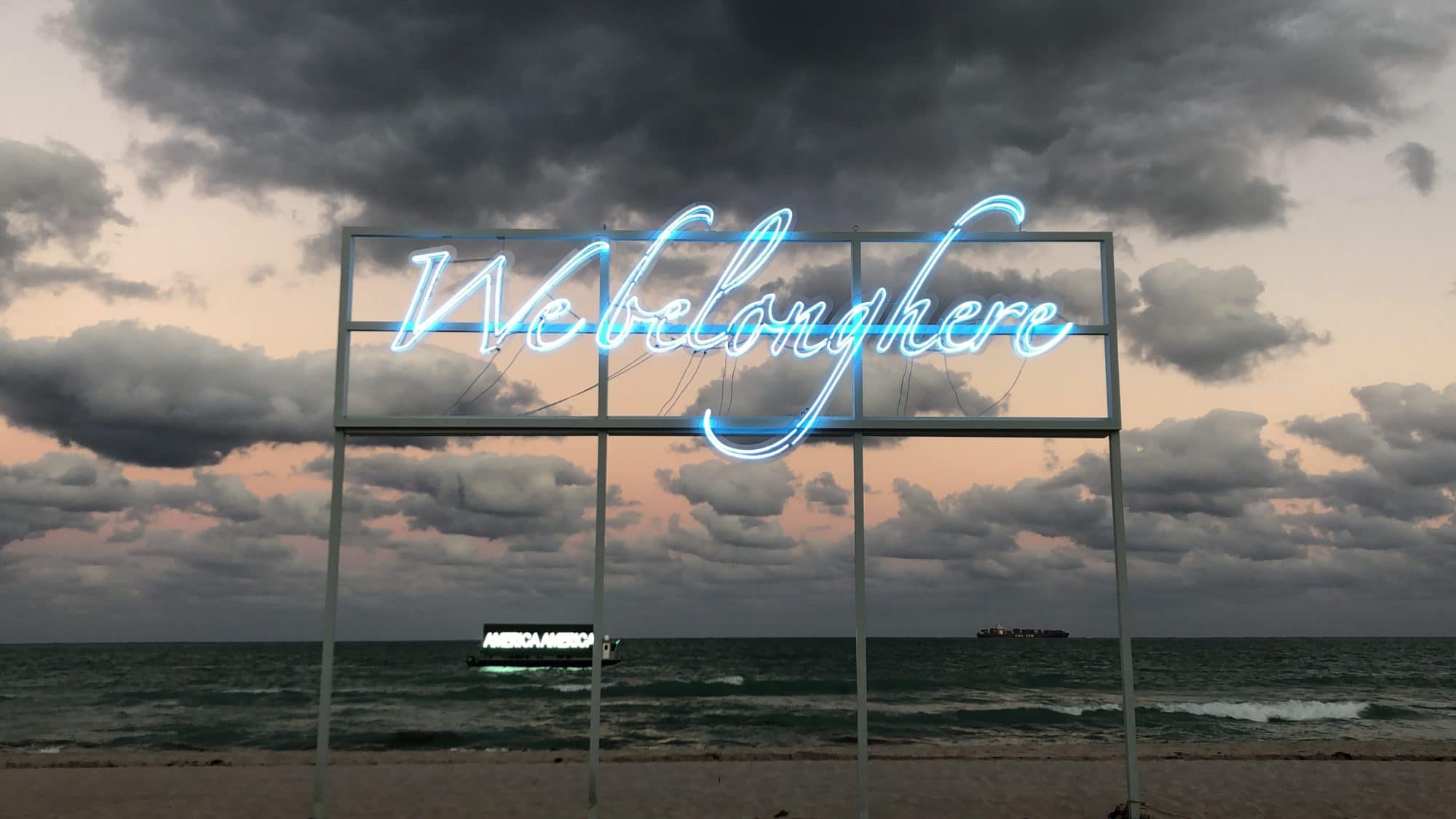
Tavares Strachan, “We Belong Here”, 2018, sky blue neon, transformers and acrylic and Alfredo Jaar “This is not America” 1987/2018 digital billboard on floating barge. Site- specific installations for the Faena Festival.
The phrase, “We Belong Here”, is both an affirmation and a veiled question. In its explicit referencing of the iconic neon signage of Miami’s deco drive, the work is a reclamation of belonging that asks us to re-imagine how we define place – and this place in particular. Strachan’s work in the context of Miami, permits us to think that this city may potentially be the quintessential American city— given its role as a sanctuary, place of refuge for communities from around the world, as bridge across divergent cultures, and ultimately as a point of convergence and commonality. Originally installed in Times Square in 1987, Alfredo Jaar’s LED billboard has been re-contextualized
